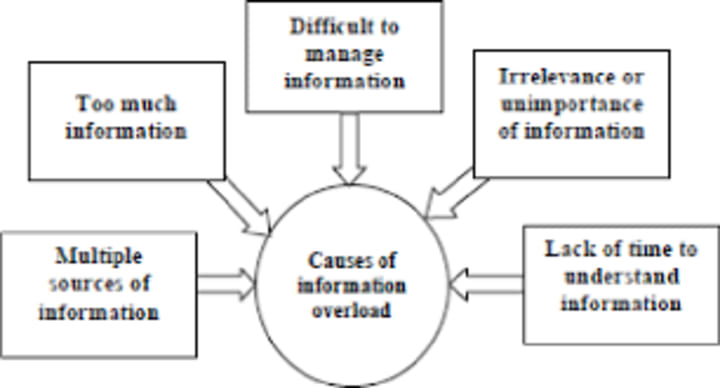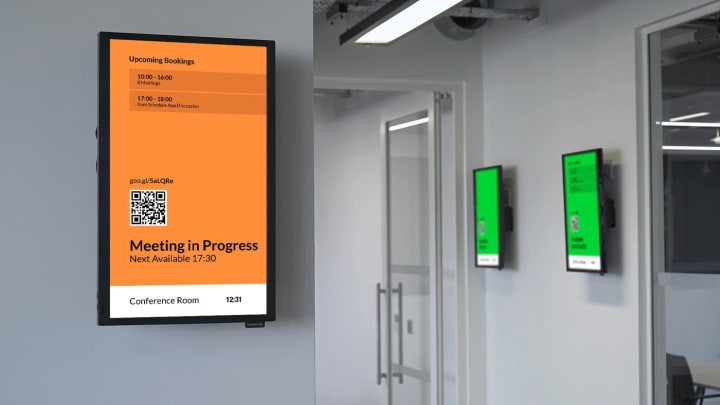Information Overload: Definition, Causes, Effects, & Tips for Reducing It
Besides impacting your employees’ health and overall wellbeing, information overload also affects their performance in the workplace, your capability to attract and keep skilled workers, and your brand reputation.

Did you know that 25 percent of employees experience significant stress and poor overall wellbeing due to excessive information they have to process at work? In simple terms, they are suffering from information overload. And it’s significantly hurting their health and overall well-being.
What is Information Overload?
Information overload is a situation where a large inflow of information hampers understanding of an issue, making sound decisions, and performance at work. Besides impacting your employees’ health and overall wellbeing, information overload also affects their performance in the workplace, your capability to attract and keep skilled workers, and your brand reputation.
What are the Causes of Information Overload in the Workplace?
Information overload refers to overwhelming data workers are handling in their day-to-day jobs. The volume of data workers are dealing with at work, however, isn’t the only problem most companies are struggling with in today’s rapidly-changing work settings. Sharing irrelevant or unnecessary data with employees also causes information overload. Consequently, information overload refers to both excessive information that employees handle daily at work and irrelevant information they receive. The main causes of information overload at work include:
• Excessive information exchanged in the workplace
• Irrelevant and meaningless information shared at work
• Multiple platforms for sharing information, including television, RSS feeds, emails, mobile phones, radio, social media, and more
• Employees aren’t given adequate time to understand and process the information they get
• Employees receive information that is difficult to manage

What are the Effects of Information Overload on Organizations?
A 2016 survey shows that information overload is the leading cause of poor decision making in businesses worldwide. According to the survey, 36 percent of board-level executives feel their organization isn’t dealing with information overload, 37 percent feel big data has helped, while 32 percent say it has made the situation even worse.
Information overload also causes workers to feel unfairly overwhelmed and burned out. It creates a perception that they have a lot on their plate when in a real sense they don’t. This can result in poor engagement, a decline in productivity, and a high rate of employee turnover. Excessive information, especially when it’s irrelevant or useless can also confuse workers on their job responsibilities and make them uncertain of where to direct their attention. Some of the negative effects of information overload include:
• It harms the health and wellbeing of your employees
• It lowers the performance and productivity of your employees
• It reduces team performance
• It hurts the reputation of your brand and business
• It reduces workplace collaboration
• It lowers employee satisfaction
• It negatively impacts workplace relationship
• It results in poor decision making
• It causes a high employee turnover rate

How to Reduce Information Overload for Employees
Getting rid of information overload in the work environment is an arduous task, but with effective messaging strategy and tools, you can significantly minimize it in no time. Here are 6 tips to help you minimize information overload for happier and healthy employees.
1. Choose Communication Channels Wisely
A good way to reduce information overload is to choose communication channels that align with the communication needs of your business. Collaborative tools like Slack and Basecamp can help you create a strong digital workspace that fosters seamless collaboration and cultivates meaningful relationships in the workplace. However, to build a strong sense of belonging, more face-to-face communication will be required.
As a business leader or manager, companywide emails are perhaps your favorite communication tools, mainly because of the notion that they can be personalized and sent effortlessly. However, digital signage is emerging as the go-to communication tool. Digital signage and media players enable you to navigate the clutter of email and communicate with a huge group of employees concurrently.
2. Consider the Relevance of Communication
Is the message relevant to every worker? Ask yourself this question before communicating your news to workers. And if the information you want to share is significant to only a section of your employees, consider sharing it with only those employees. Otherwise, an influx of irrelevant or unnecessary information may force workers to disregard or skim communications.
3. Optimize Communications
With 38 percent of employees missing information daily, it’s important to ensure your communication systems work efficiently. Optimized communication systems enable your employees to communicate flawlessly and instantly. They also ensure fast and reliable file storage, transfer, and sharing. Monitoring projects in real-time is another fundamental part of optimized communication in the workplace.
An effective strategy for streamlining your communications is to use a single tool to communicate important company information. For instance, you can use digital signage to communicate as well as engage your employees. Be sure to use easy to read fonts, a color scheme that aligns with your branding, and a perfect balance between design elements and white space when designing a digital signage display.

4. Get the Leadership Team on Board
When it comes to streamlining your internal communications to deal with information overload, you need to get the support of the leadership team. It’ll be extremely difficult to enhance your internal communications without bringing the management on board or if the managers lack vision and the right leadership skills. You need to ensure the top management prioritizes employees’ wellbeing and supports your internal communications strategy. And you can do that by involving them throughout the process of developing and implementing your internal communications strategy.
5. Make Sure Your Employees Have the Tools They Need
Ensure your employees have the right software and hardware to perform their work obligations efficiently. On top of that, ensure they know how to use these tools. And a great way to achieve that is by organizing regular training and capacity building workshops. You should also ensure they have relevant knowledge regarding the company structure, vision, and what’s expected from them.
6. Ask Your Employees about Communication Pain Points
Seek feedback from your employees about your internal communication. Be sure to include questions that will help you understand their communication pain points. One effective way to collect feedback from employees is by conducting regular employee surveys. To encourage deeper thought on a specific subject and increase the odds of getting honest answers, incorporate targeted questions in the survey. Holding regular team meetings, employee performance reviews, and putting a suggestion box in place are other great strategies for obtaining feedback from employees regarding your internal communications strategy.
Parting Shot
Information overload is one of the main challenges that businesses are facing in the modern work environment. Besides your employees’ experience, information overload also affects your company’s bottom line. The good news is that the above 6 tips can help you reduce information overload for happier, healthier, and productive employees.
About the Creator
Gidie Write
Gidie Write shares content with readers all over the globe. Topics include travel, technology, life hacks, health and wellness, finance, law, and more.






Comments
There are no comments for this story
Be the first to respond and start the conversation.